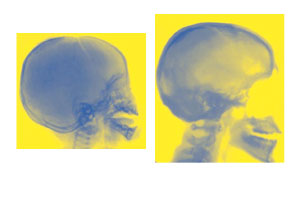It is the stage that goes from birth to 28 days of life. During this short period, newborns are very vulnerable beings that need constant protection and care. They must pass one of the first vital challenges: getting used to the abrupt change that leaving the maternal womb meant and submitting to the conditions offered by the external environment.
Averagely, newborns measure close to 50 centimeters and weigh between 2.5 and 4 kilos. Although a newborn already has all of the organs necessary to survive, it still has to adjust its functions to its new way of life. Tasks that used to be performed by the mother (through the placenta), like breathing, nourishing and eliminating waste, must now be carried out by the baby independently. Learning to breath air is one of the first big tasks.
Immediately after birth, the newborn’s lungs will fill up with vital oxygen, which will reach each of the body’s cells.Likewise, its circulatory system begins to work autonomously, adapting and closing some conduits, like the oval foramen, the arterial duct, which connects the aorta to the pulmonary artery, and the umbilical vessels. A noticeable increase in pulmonary blood flow is produced, as well as an increase of pressure in the heart’s left chamber.
The still immature kidneys slowly begin to perform their excretory task and the digestive system adapts its mechanisms for a correct nutrient absorption. The only and vital food for now will be breast milk, which not only contains important nutrients, but antibodies as well. Its eyes have a non-defined coloration until around the second week after birth. This, because these important organs have not been exposed to light, so they haven’t reached their definite color yet. They start to open and use them to explore the world around them little by little. It is possible for their nose and ears to be flat due to the tightness of the last months within the maternal womb. In the same way, its head can be slightly elongated or deformed because of its difficult passage through the birth canal.
Cranial capacity
In order to ease its passage through the birth canal and enable a normal cerebral development, a newborn’s cranium is not completely ossified or closed yet. Like a puzzle that joins its pieces little by little, an infant’s cranium is made up of bones (a frontal one, an occipital one, two parietals and two temporal ones) and four soft spaces covered by fibrous membranes, which are dubbed fontanels or cranial sutures. There are four of this last kind:
- Anterior, bregmatic or frontal fontanel, which is found in the superior part of a newborn’s head, has a rhomboid shape and is the junction of the frontal, saggital and coronary sutures.
– Anterolateral or sphenoidal fontanel, of irregular shape and located on both sides of the meeting point of the frontal bone, the parietal bone and the temporal bone, and the superior portion of the sphenoidal bone.
– Mastoid fontanel, located on both sides of the cranium, where the parietal, temporal and occipital bones meet.
– Posterior fontanel, triangular-shaped, in the space located between the parietal and occipital bones.
Fontanels are normal structures in the development of a newborn and generally disappear between the age of 12 and 18 months, period in which all of the cranial bones finally manage to bond for life. Medically, the presence of fontanels helps evaluate intracerebral pressure; if the fontanels are bulgy, they indicate an increase in brain pressure.








 Termina la Guerra de Corea
Termina la Guerra de Corea